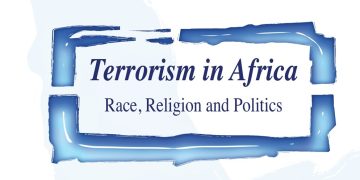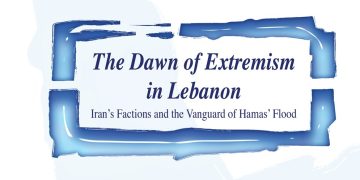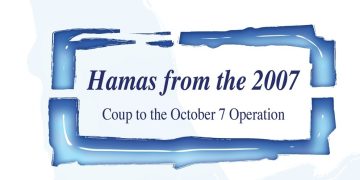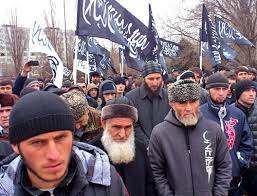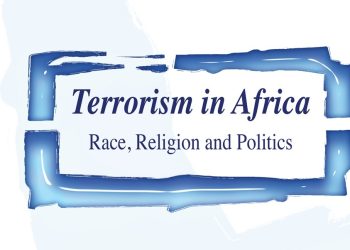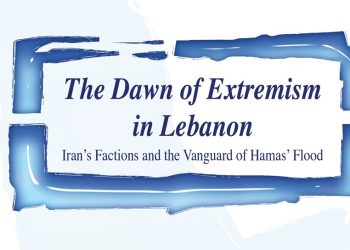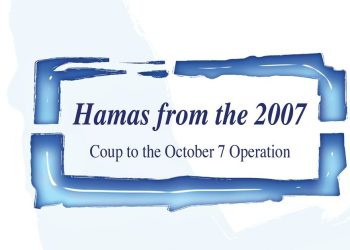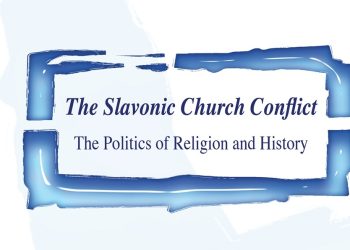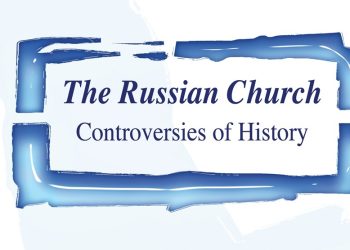Dr Mikhail Roshchin
This primer on Islamist movements in Dagestan and North Ossetia is based primarily on the author’s field research in the region.
Dagestan
Since ancient times, Dagestan has been well known in the Northern Caucasus for being a religious area. Before the 1917 revolution, more than 1700 ordinary mosques could be found in Dagestan, as well as 356 “cathedral” mosques. 766 schools (madrasa) were in operation in which more than 2500 mullahs and qadis worked. In the years of the Soviet regime, the overwhelming majority of mosques were closed, many Moslem scholars (alims) were harassed, and the teaching of the Arabic language was forbidden. But by the 1970s and 1980s, religious life was already being revived. In 1987, there were 27 active mosques in the territory of Dagestan.
What happened in the 1990s can may be called a “religious renaissance”: throughout Dagestan, Muslim communities (jama’ats) were restored, mosques were constructed or renovated, and Muslim madrasas, institutes, and universities were opened. By September 2003, the Republic of Dagestan had registered 1091 “cathedral” mosques, 558 ordinary mosques, 16 Islamic Universities and Colleges, as many as 141 madrasas, and 324 schools attached to mosques. [1]
The majority of Dagestani Muslims adhere to traditional Sunni Islam according to the Shafi’i school. Local Islam was deeply Sufi, as reflected in present-day Dagestan in the form of four tariqat (Sufi orders): Naqshbandiyah, Shaziliyah, Jazuliyah (an offshoot of the Shaziliyah order), and Qadiriyah.
In Soviet times, tariqat were banned, while Sufi sheikhs were either persecuted
or acted underground. Transfer of permissions (iznu or ijaza) to propagate one tariqa from the sheikh to the students also took place underground. It was often the case that when iznu (ijaza) was granted, there were either very few witnesses or none at all. This subsequently led to the appearance of numerous sheikhs in the 1990s, one accusing the other of not having obtained the iznu (ijaza) in the correct way. And as, most of the time, the sheikh who supposedly gave the permission is no longer alive to comment, this added to the confusion.
The most influential sheikh of Dagestan at the moment is the Avar Said Efendi of Chirkey. He is considered a National Sheikh of Dagestan. He teaches according to three tariqat: Nakshbandiya, Shaziliya and Jazuliya. Prior to becoming a sheikh, he was a simple shepherd. Today, his murids (followers) are in control of the Spiritual
Administration of Dagestan Muslims, the Muslim radio and television broadcasts, and the Muslim periodicals. Although there are representatives of various ethnic groups among the followers of Said Efendi, Avars are notably predominant. The Mufti of Dagestan, the Avar Ahmad Hajji Abdullayev, is also a murid of Said Efendi. Not only do they control the Spiritual Administration of Dagestan Muslims, which plays an important political role; they are also closely connected with the state structures of Dagestan.
The best-known sheikh in South Dagestan, which is a special area of the republic mostly populated by Lezgins, is Sirajuddin of Tabasaran. [2] He obtained iznu in 1989 from the Naqshbandi Sheikh Abdullah, who lived to the age of 115 and was buried in Derbent at the end of the 1990s. Sirajuddin organized a network of madrasas throughout Tabasaran and became the real spiritual leader of this region. He also established the Islamic university of South Dagestan, situated in Derbent.[3]
The percentage of active followers of Sufism is gradually growing and is apparently sufficient to maintain the spiritual culture characteristic of Dagestani Islam. Traditional Sufi Islam in Dagestan is distinguished, first of all, by its intellectualism. It is non-aggressive. It treats the concept of jihad as a personal struggle of the believer towards self-improvement. Murids relate to their sheikh just about in the same way as simple laymen in Orthodox Christianity do towards their Starets. [4]
In political terms, Said Efendi of Chirkey’s murids are the most noticeable. Not only do they control the Spiritual Administration for the Dagestani Muslims, which plays an important political role; they are also closely connected with the state structures of Dagestan. And in religious terms, one finds that it is the close connection of murids with their sheikhs that is the basis of the strong adherence of Dagestan’s population to its traditions and to its religious practice. It is not easy to evaluate with accuracy what percentage of the Muslim population in Dagestan regularly performs their religious rites, but even if the number fluctuates between 20 and 30 percent of the population, then this would be considerably higher on average than in the various different religions practicing rites in Russia as a whole.
At the beginning of the 1990s, attempts were made to create Muslim boards for each of the separate ethnic communities in Dagestan. Kumyks, Dargins and Laks took steps to form their own administrations. The process came to a halt in February 1994, when Dagestan Supreme Soviet ruled that there should be only one Islamic administration for the republic, as was the case during the Soviet era. Since then, the Spiritual Administration of Dagestan Muslims (SADM) has controlled (or has tried to control) all the activities of registered mosques (Sunni mosques for the majority of them, and Shi’ite mosques for the Shi’ite minority).
Salafism appeared in Dagestan at the end of the 1980s. Two branches or tendencies can be distinguished among Dagestani Salafis: a radical one and moderate one. By the second half of the 1990s, the radical branch had adopted a more formal structure and was called the “Muslim Jama’at” (Muslim community). The spiritual leader and main representative of these radical Muslims (the so-called “Wahhabis” as they are named in Northern Caucasus) is Bagauddin Muhammed [5], an ethnic Khvarshin [6] who was proclaimed “Amir of Muslim Jama’at”.
Starting in 1993, Bagauddin and his closest associates, who were based in the town of Kyzilyurt near Mahachkala, were subjected to systematic discrimination and repression by the government and by representatives of traditional Sufi Islam. In the fall of 1997, Bagauddin and his closest associates retreated to Chechnya, calling this voyage a “little hijra” — an allusion to the Prophet Muhammed’s journey from Mecca to Medina in the year 622. But the growing alienation of the “Wahhabi” movement from the rest of Dagestani society contributed to the radicalization of the movement.
To a large extent, the beliefs of the “Muslim Jama’at” were put in practice in 1997-1999 in the villages of Karamakhi and Chabanmakhi, located in the Buinaksk region in the central part of Dagestan. The majority of the villages’ inhabitants accepted the ideology of this radical movement, and the local Muslim community (which had its mosque in the village of Karamakhi) became a tiny “Wahhabi” republic, i.e. the “advance guard of radical Islam in Dagestan.” Young people in search of “pure Islam” flocked to these villages from all over Dagestan and from other republics of the Northern Caucasus. While the villagers respected Bagauddin as its moral and ideological authority, they looked to Khattab as their military authority.
Khattab, a Saudi by birth, had settled in the village of Karamakhi even before the war in Chechnya broke out in December 1994. His closest ally, who led the defense of Karamakhi and Chabanmakhi, was Jarulla Rajbaddinov. At the beginning of August 1999, radical Muslims declared a jihad (holy war) for the liberation of Dagestan from the hands of non-believers. [7] The Chechen troop commander Shamil Bassayev, “emir” of the North Caucasus liberation army, and the commander Khattab were the military leaders of this jihad. Shamil Bassayev distinguished himself by leading a raid on Buddenovsk in 1995, after which the Russian leadership was forced to begin negotiations with Chechens. In Chechnya, Shamil Bassayev became a national hero, but in Dagestan he was not accepted as the leader of the jihad because leaders of holy wars, the imams, traditionally belonged to the Avar ethnic group.
Khattab remained the most popular with the Dagestani radical Muslims. Khattab was born in 1969 in ‘Ar’ar in the North of Saudi Arabia. His real name was Samir al-Suweilim. When he was 18 years old, he went to Afghanistan, where he gained his first experience of military conflict. Then, he moved to the Dagestan village of Karamakhi where he married a local girl. From early 1995, Khattab was in Chechnya, where he gradually became one of the most influential military commanders. In spring 1996, his fighters mounted an ambush in the village of Iaryshmardy and destroyed a large Russian military convoy, killing 95. After the end of the First Russian-Chechen war in August 1996, he set up a number of military training camps in Chechnya designated to train the radical Muslims of the Northern Caucasus.
By early August 1999, cross-border incidents between Dagestan and Chechnya were happening on an almost daily basis. Finally, Bassayev and Khattab chose the Botlikh district for the main base of their assault. They managed to attract supporters for the jihad from the Avar villages of Ansalta, Shodroda, Rakhata and Tando. In those villages, notably in Ansalta, there were significant groups of radical Muslim youth. The Islamic Republic of Dagestan was proclaimed after the rebel forces had seized the aforementioned villages in the Botlikh district. Bassayev and Khattab’s forces aimed to take Botlikh and continue along the main river Andiyskoye Koysu in order to take the village of Tlokh, which would open up the way to central Dagestan. [8]
Although it is estimated that only around six to seven percent of the Dagestan population sympathize with radical fundamentalist ideas [9], Khattab and Bassayev probably counted on the support of a significant proportion of the local population, thinking that they would be seen as liberators. This did not happen. In fact, quite the opposite took place: Local militias were immediately established in the neighboring villages that had not been seized by the rebels. In Botlikh district, the ethnic Andi people [10] closed four mountain passes, the most important of which are Harami and Riqwani. The Andi people have for many years quarreled with the Chechens about alpine pastures. Andi people are strong adherents of Sufi Islam and despise “Wahhabism”. A decision to resist fundamentalists was made by the Andi jama’at societies of four villages: Andi, Gagatl’, Riqwani and Ashali. [11]
The lack of popular support for the “liberators” stemmed in part from the fact that traditional “popular Islam,” which is adhered to by the vast majority of Dagestan’s Muslim believers, coexists poorly with radical fundamentalist Islam. In those villages where there are supporters of both trends, separate communities have formed, each with its own mosque. Moreover, the majority of the population of Dagestan is extremely hostile and suspicious of anything connected with so-called “Wahhabism.” Here, the word “Wahhabi” has a derogatory and negative connotation. As a result of the events in Botlikh, when the insurgents were defeated, an unexpected alliance was formed between the Dagestanis and the Russians. Women in Botlikh treated Russian soldiers as if they were their own sons. Nothing of this nature ever happened in Chechnya, where Russian Army was always considered a hostile force.
The euphoria following the defeat of the radical Muslim forces in Botlikh district had scarcely evaporated when, on the night of 28-29 August 1999, punitive measures were taken against the inhabitants of Karamakhi and Chabanmakhi, which a year and a half ago had declared themselves to be a special Muslim area governed by Sharia law. The villages were totally controlled by radical Muslims, the majority of whom are Dargins. The decision to mount this operation was passed on 25 August, the very day that the Russian Prime Minister – at the time, Vladimir Putin – arrived in Dagestan. However, the decision was not made by Putin alone, but in conjunction with the chairman of the State Council of Dagestan,
Magomedali Magomedov. These punitive measures violated the agreement reached a year earlier in August 1998 between Serguei Stepashin, the Minister for Home Affairs at the time, and the inhabitants of the “Wahhabi” villages. In 1998, Stepashin was warmly welcomed in the villages of Karamakhi and Chabanmakhi. He reached an oral agreement with the “Wahhabis” by which they would be allowed to live according to Sharia law but would refrain from proselytizing outside their community. The Botlikh events gave the federal side an opportunity to violate this agreement and dispose of the villages.
The local leader of these villages and the director of their defenses was Khattab’s closest comrade, Jarulla Rajbaddinov. The villages were extremely well-armed and their defenses were strong. They even had antiaircraft guns. The villages were in the foothills, near a dense forest, where the rebels could easily retreat should they be forced to wage a partisan war. However, after two weeks of armed struggle, the Russian military forces crushed the resistance in these villages, leaving few buildings in place. According to the “Wahhabi” sources, around 1200 soldiers perished during this operation.
The punitive operation against the Karamakhi-Chabanmakhi community has encouraged a new wave of activity from Bassayev and Khattab, whose forces entered Novolaksky district on 5 September 1999. This time Bassayev’s and Khattab’s units were comprised mostly of Chechens, and they rode to within five kilometers of Khasvyurt. [12] Had they reached Khasavyurt, the situation could have become very serious because, there, they would have been able to count on the assistance of local Chechens (Akkin Chechens), who constitute more than one-third of the city’s population. [13] If they had taken the city, the fate of the jihad would have unfolded in a completely different way: Khasavyurt opens up the road to Mahachkala, the capital of Dagestan, where defenses were already being built on the city’s outskirts. Instead, by the middle of September, the Chechen units sustained heavy casualties and had to withdraw into Chechnya.
This attempt to start a jihad in Dagestan was perceived by most of the population as aggression organized by Chechnya’s extremist circles. For this reason the local militias helped the federal forces against the “mujahidin.” In general, the idea of jihad (or “gazawat” as it is called in the North Caucasus) is hardly alien to the Dagestani consciousness. It is particularly viable among the Avars, Dargins, Laks and Akkin Chechens. But the gazawat was always led by an imam whose authority extended to many ethnicities. And, here, all the five imams of Dagestan and Chechnya were Avars.
For the Avars it is inconceivable that the next imam be a Chechen. But as an “emir”, Bassayev had pretensions to the role of imam. For most Dagestanis, Bassayev’s image robs the idea of the jihad of any allure. Perhaps it was the negative example of the Chechen state of 1997-1999 that cured Dagestanis of any desire to have their own “Islamic state.” And the armed conflict of August-September 1999 persuaded all the Dagestanis, regardless of nationality/ethnicity, that they had something to defend. The war against Bassayev and Khattab united members of different nationalities and became an important factor in the formation of a Dagestani identity.
The incursion of radical Salafis from Chechnya into Dagestan and Chechen President Aslan Mashadov’s refusal to dissociate himself fully from Bassayev, by firing him from the Chechen commanders and bringing him to trial, opened the way to the Second Russian-Chechen war. In Dagestan itself, this war started a difficult period for all Muslims (not only “Wahhabis”) who do not agree with the policy of total control realized by the Spiritual Administration of Dagestan Muslims and its protector, Said-efendi of Chirkey. Security agents started to seize any young man suspected of being “Wahhabi.” Now, it is a rather difficult time for all sheikhs who are not connected with Said-efendi and for followers of Ahmed-qadi Akhtayev, a moderate Salafi teacher who died in March 1998 in his native village Kudali and is believed to have been poisoned.
It seems that the authorities in Mahachkala have interpreted the lack of popular support for the “Wahhabis” and a willingness to side with the government against mujaheds as license to suppress all competing strands of the Islamic faith. This can only lead to further alienation and intolerance between the official SADM and various representatives of the whole spectrum of belief.
In the early 2000s it was the turn of the next generation: young people who were attracted to radical Muslim salafism. The now rejuvenated movement received significant support from military jamaats, which began to be formed in the north Caucasus Muslim republics of Russia including Dagestan, and helped to strengthen the Salafi movement. These were composed of young radical Muslims who, although few in number, were strictly disciplined and well organized. The militarized jamaats were part of a phenomenon known as ‘political Islam’, whose most visible and striking ideologist in the early 2000s was Yasin Rasulov, a graduate of the Dagestan State University. In Rasulov’s opinion, “the invasion of Dagestan territory by the ‘Islamic Army of the Caucasus’ (the jihad of August-September 1999. M.R.) with the aim of establishing sharia and subsequent destruction of the sharia enclave of Kadar’s zone (the ‘Wahhabi’ communities of Karamakhi and Chabanmakhi in Dagestan. M.R.) as well as today’s punitive actions by the authorities against the supporters of ‘Wahhabism’, are the continuation of the historical tradition of opposition to the Russian authorities and of armed Muslim opposition in the North Caucasus. The cooperation of loyal official clergy with the authorities and with the Ministry of the Interior appears logical and normal within the framework of this tradition which the new Russia maintains”. [15]
Yasin Rasulov was killed on April 10, 2006 during one of the special operations of the local Ministry of Interior. His ideas, however, were widely adopted by his supporters in the North Caucasus. The creation of the “Caucasus Emirate” was an idea taken by one of Rasulov’s supporters, Chechen Republic president Ichkeria Dokka Umarov — who realized that to convert the Chechen Republic of Ichkeria into an Emirate would help revive and increase the size of the opposition in the North Caucasus, and spread military action into the territory of Chechnya’s neighboring republics. So in October 2007 he resigned as president and appointed himself “the Emir (commander-in-chief) of the fighters of the Caucasus and the leader of the Jihad” and also “the sole legal power over all territories where there are mujaheds.” [16] Dagestan was included as a province [vilaiyat] of this Emirate.
How far does the Caucasus Emirate reflect reality, and to what extent is it merely a “virtual project” conjured on radical Islamist websites, such as that of the “Caucasus Centre?” [17] In Dagestan, Salafi forces became active in urban guerrilla warfare. Here the ideas of Salafism were widespread among the population, particularly among the young. Owing to the high level of religiosity and the strength of Sufi traditions among the population, Dagestan had what could be judged to be a smouldering religious war, which in time could grow into a civil war. On May 25, 2009 in Mahachkala, Akhmed Tagayev, who in practice headed the Spiritual Administration of Dagestan Muslims and who has actively worked against Islamic fundamentalism in the republic, was killed. On June 5, 2009, Dagestan’s Minister of the Interior, Adilgirei Magomedtagirov, who fought for over ten years against the Dagestan mujaheds and survived a number of assassination attempts, was shot by a sniper.
It appears that mere police measures undertaken against a growing armed Muslim opposition in Dagestan are insufficient to pacify the situation there. Without free and open religious discussions among the various schools of Sunni Islam, it will be nearly impossible to find a peaceful resolution to the current impasse. Such a discussion finally began in 2012, and some voices from both the Sufi and Salafi sides are interested in find peaceful solutions to polarizing religious disputes. But hardline Salafis from the armed Islamist opposition are not.
Notes
[1] This information was provided to me by the Committee for Religious Affairs of the Republic of Dagestan in November 2003. There is evidence that after that time only slight changes happened in Dagestan.
[2] Tabasaran are a small people speaking a language which is close to Lezgin.
[3] On the 12-13 August 2000, I was a guest of Sheikh Sirajuddin in his native settlement of Khurik. On 12th August there was a large zikr in the house of Sirajuddin during which the “La ilaha illallah” (There is no god but God) was recited loudly over and over again. In some ways the zikr resembled techniques encountered nowadays in new age movements such as “Rebirth” (new generation) and Kriya (Indian respiratory exercise with a simultaneous unique meditation), and as well as being reminiscent of the zeal of members of the “Khlysty” (a Russian sect), judging from the descriptions.
[4] In Russian, Starets means “an elder”. In the Russian Orthodox tradition, Starets is a spiritually powerful monk who has his own followers. He usually has many spiritual children.
[5] His full name is Bagauddin Muhammed Magomedov or Bagauddin Muhammed Kebedov. In the literature, he can be found under all these names. He refers himself as “Bagauddin” and therefore will be mention under this simple name here after.
[6] The Khvarshin people is a small ethnicity. By their language, they belong to Avaro-Ando-Tsez language group. They live in Northern Dagestan. A part of them was forcefully moved to Chechen land during Stalin era. Therefore, for example, Bagauddin was born in 1945 at Vedeno, the native village of Shamil Bassayev.
[7] M. Roshchin, N. Yefremova, “Features of Jihad in Dagestan”, NG-Religii, n°16, 23 August 2000.
[8]This idea was kindly suggested to me by Russian scholar Alexander Krishtopa living in Mahachkala.
[9] There are no official statistics on this issue. This is here my own evaluation as a field-researcher working for a long period in Dagestan.
[10] The Andi people were not included in the census but are estimated to number about 40,000. In recent years, they have become more politically assertive, seeking greater language rights and to be added to Dagestan’s titular nationalities and represented on its state council.
[11] This information was kindly given me by Prof. Mamaikhan Aglarov who visited Andi villages at the time of the jihad in Dagestan.
[12] Khattab remained very active over time of the Second Russian-Chechen war until April 2002 when he died from a poisoned letter given to him by a secret agent of Russian FSB (Federal Service of Security) infiltrated to his detachment. Chechen government awarded him in autumn 1996 after the end of the First Russian-Chechen war. After his death his eldest brother Mansur al-Suweilim gave some new details concerning his personal life. See “ Al-Hayat” (in Arabic), 29 April 2002; 1st may 2002.
[13] Akkin Chechens are one of the 14 titular nationalities of Dagestan.
[14] In the beginning of 1990s the constitution of the Chechen Republic of Ichkeria (a self-proclaimed state in the post-Soviet space) was secular, but this constitution was changed during the First Russian-Chechen war and this Republic was proclaimed an Islamic state. The second president of Chechenia Zelimkhan Yandarbiyev approved, in 1996, the introduction of Islamic Codex of Criminal law written according to fundamentalist Sudanese model.
[15] Yasin Rasulov: A Mirror of Caucasian Destiny, draft.
[16] http://www.kavkazuzel.ru/newstext/news/id/1200657.html
[17] http://www.kavkazcenter.com/
North Ossetia
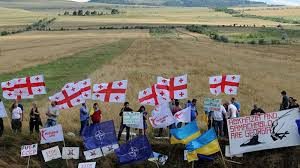
Little is known about the Muslims of North Ossetia outside its borders. However, according to the assessments of experts (in particular, the Ossetian sociologists Timur Dzeranov and Olga Oleinikova), approximately 15 percent of the population of the republic is Muslim. [1] Islam spread in North Ossetia mostly during the 19th century. The central city mosque of Vladikavkaz was built in the early 20th century. Funds for the construction of the mosque were provided by Azerbaijani oil magnate Murtuza Mukhtarov, who was married to an Ossetian woman with the last name of Tuganova. The mosque was built in the Egyptian style. It is unrivaled in the North Caucasus in terms of architectural excellence.
During the Soviet period, all mosques on the territory of North Ossetia were closed. During the religious revival that arrived during the perestroika years and which continued after the breakup of the USSR, the religious life of Ossetian Muslims saw new life. On the one hand, the older generation of Muslim traditionalists [2] was gaining strength. Their most active representative was Dzankhot Khekilaev, who died in the summer of 2004. [3] On the other hand, thousands of young men in North Ossetia began actively following Islam and, in particular, its Salafi variety. This, in turn, led to the formation of two parallel Muslim structures in the republic. The Muslim traditionalists founded the Spiritual Directorate of Muslims of North Ossetia in 1990, while Muslim youth began to build their own organization, which they called the “Jamaat” and which was officially registered as the Islamic Cultural Center in 1996. The young people elected Ermak Tegaev to be the chairman or Emir of the newly created entity. It should be noted that 40-year-old Tegaev had a criminal past and had spent 12 years behind bars during the Soviet period.
The composition of the Jamaat, according to its Vice Emir and imam of the Vladikavkaz central city mosque, Suleiman Mamiev, who met with me on a number of occasions, included the Muslim communities of Beslan and Elkhotovo. The Ossetian Jamaat closely cooperated with the Jamaat of Kabardino-Balkaria, headed by the charismatic imam Musa Mukozhev, who was popular among Muslim youth and later became an outlaw and one of the leaders of the armed Islamic opposition in Kabardino-Balkaria. Musa Mukozhev was killed on May 10,2009 during an operation of the Russian security services. Suleiman Mamiev told me that the Muslim community of Vladikavkaz in the early 2000s numbered about 500 and that the majority were ethnic Ossetian. Before the tragedy in Beslan, Vladikavkaz was teeming with many Chechen and even Ingush students, but after the tragic events of September 1-3, 2004, many were expelled from colleges and forced to leave the city.
One of the militants who participated in the September 2004 Beslan school hostage crisis—Vladimir Khodov—was a resident of the North Ossetian village of Elkhotovo. He was an ethnic Russian who converted to Islam and later worked as a cook in the detachment of Chechen militants led by Ruslan Gelaev. Khodov moved to North Ossetia in his childhood in 1979, when his mother, a resident of the Ukrainian town of Berdyansk, married Anatoly Khodov, an Elkhotovo native and an Ossetian. Who Khodov’s real father was is unknown, but he was raised in an Ossetian village by an Ossetian stepfather. The village of Elkhotovo is predominantly Muslim. The local mosque was built in 1902. According to village residents, Anatoly Khodov was a former military man who was respected and whose family was relatively well-off.
The first criminal search for Khodov was announced in 1998, when he was accused of rape. After that, however, he frequently visited Elkhotovo, and it was during this period that he decided to enter one of the madrasas in Dagestan. After graduating from the madrasa, Vladimir Khodov underwent a metamorphosis and joined the radical Muslims, who are colloquially called “Wahhabis” in the North Caucasus. He visited his mother in Elkhotovo regularly and spent many hours at the mosque every day. Since 2002, Khodov has been accused of organizing a February 2004 bombing in Vladikavkaz and a failed bomb attack on a train in the vicinity of Elkhotovo in May 2004. Nonetheless, this had practically no impact on his life in his home village. He lived there, albeit not on a permanent basis, but still quite often. The neighbors maintained normal neighborly relations with him. Then the Beslan tragedy took place, after which the local court ordered his mother to leave the village. [4]
According to the North Ossetian Muslim newspaper Da’wa, on February 2, 2005, officers from the Directorate of the Federal Security Service (FSB) of the Russian Federation for North Ossetia, in a joint operation with operatives from the Interior Ministry’s Directorate for the Fight Against Organized Crime raided the house of the chairman of the Islamic Cultural Center, Ermak Tegaev. According to Da’wa, witnesses saw how law enforcement officers planted explosives in Tegaev’s residence and, based on the alleged discovery of the explosives, he was later arrested. [5] When Ermak Tegaev was detained, he was found to be in possession of 270 grams of plastic explosive and three electric detonators as well as religious literature and instructional materials, including video- and audio cassettes of extremist exhortation. [6]
According to Ermak Tegaev’s supporters, as well as other Muslims, his detention represented an attempt to destroy the Ossetian Jamaat and Islamic Cultural Center. Later, in August of 2005, the Sovietsky District Court of Vladikavkaz sentenced Ermak to two-and-a-half years in a forced labor camp. During the following year, the imam of the Vladikavkaz city mosque, Suleiman Mamiev, emigrated to Turkey together with his mother. After his return from a labor camp, Tegaev tried to renew ‘Jamaat’ activity, but soon disappeared. He is thought to have been killed by the security services.
In April 2005, Murat-khaji Tavkazakhov, a resident of the Kartsa suburb of Vladikavkaz, which is predominantly populated by Ingush, became the head of the Spiritual Directorate of Muslims of North Ossetia. However, the ethnic Ossetian Tavkazakhov failed to improve Ossetian-Ingush relations within the Muslim community of Ossetia. His close ties to the Ingush caused aggravation among Ossetian Muslims. [7] Many Muslims also suspected him of being corrupt and misappropriating funds that had been pouring in from various Muslim foundations and charities that support Islam in Ossetia.
In February 2008, Ali-khaji Evteyev was elected the new mufti of the Spiritual Directorate of Muslims of North Ossetia. [8] He was born in Moscow in 1974 to an ethnically mixed family: His father was Russian and his mother was Ossetian (her maiden name was Komaeva), originally from a family of Muslims. As a child, Evteyev moved with his parents to Beslan, where he grew up. At the age of 22, he embraced Islam, and in the late 1990s, took an active part in the creation of the Ossetian Jamaat. He was among the activities who supported the election of Ermak Tegaev to the position of Emir. Later, in 2000, he became disillusioned with Ermak Tegaev and the Jamaat itself. He decided to travel to Cairo, Egypt, with Kumyks from North Ossetia. In Egypt he entered preparatory courses at Al-Azhar, where he studied for four years. In 2004, Evteyev made a pilgrimage to Saudi Arabia and entered the International University of Medina.
While studying in Arab countries, he maintained ties with Ossetia, visiting every summer. In 2004, he became the deputy mufti of North Ossetia. When Ali-khaji Evteyev was elected the mufti, he was studying in Medina, but he took an academic leave of absence and decided to return. When he assumed the position of the head of the Spiritual Directorate of North Ossetia, Evteyev discovered that the treasury was empty and that he would have to build it up from scratch. [9]
The new mufti described to me his main task as uniting the Muslims of Ossetia. This meant engaging the youth population, which was previously oriented towards the Jamaat, as well as supporters of traditional Islam, who are mostly representatives of the older generation. Ali-khaji’s views are moderately Salafi, which is unusual among muftis of the northern Caucasus. He is against the armed struggle of Muslims across the northern Caucasus because in his view it does not correspond with Sharia law. At the same time, a return to the roots, a rethinking of the Muslim worldview based on the experience contained in the Noble Quran and Sunnah, in Evteyev’s view, will help the Muslims of North Ossetia to find their place in the modern world.
Not everyone is enthusiastic about this view. Muftis of neighboring republics in the northern Caucasus have accepted Evteyev reluctantly into the ranks of the Coordinating Council of Muslims. The rest of the muftis are followers of traditional Islam. In 2009, the Congress of North-Ossetian Muslims confirmed Evteyev as Mufti of North Ossetia. Among participants in the Congress were, for the first time, a few representatives of South Ossetia, where local Muslims are now planning to build their own mosque in Tskhinval, a capital of South Ossetia. [10]
Despite the difficulties in recent years, which primarily related to the unresolved Ossetian-Ingush conflict, the Muslim community of North Ossetia is gradually growing — a trend which can be mostly attributed to the growing number of Ossetian converts.
The Ossetian Jamaat, which functioned legally in the past, now operates underground and from time to time informs the public about its existence by carrying out armed operations. On February 13, 2009, a car belonging to the commander of an armed detachment exploded near the building housing the dormitory of the Military Prosecutor’s Office in Vladikavkaz. [11] In late 2007, the Caucasus Emirate declared that North Ossetia was a “vilaiyat [province] Iriston,” but on May 11, 2009 this vilaiyat was suppressed and annexed by the Ingush vilaiyat [12], presumably because of Ingush involvement in the movement of radical Salafi Islam.
At present, there is growing tension between Ossetian authorities and Muslims. Ali Evteyev told me that the authorities are not happy with the Muslim revival in Ossetia. In autumn 2010, Evteyev was obliged to leave Russia. He returned to Medina to fulfill his Muslim education. On December, 26, 2012, Ibrahim Dudarov, the imam of Central Mosque of Vladikavkaz, was killed under mysterious circumstances. He was the only Muslim Ossetian leader to have received an advanced degree in Islamic education — from the Islamic University of Medina.
Notes
[1] http://www.krotov.info/libr_min/17_r/osch/in.htm
[2]Traditional Islam in North Caucasus including North Ossetia represents Sunni Islam with a big impact of local traditions (adat).
[3] http://www.religare.ru/print14426.htm
[4] Yury Kvyatkovsky.’ The history of the village of Elkhotovo’.
[5] http://www.al-azan.ru/site_news.php
[6] http://www.memo.ru/hr/hotpoints/caucas1/msg/2005/08/m49747.htm
[7] http://www.ingushetia.ru/m-news/archives/003572.shtml
[8] http://www.islamnasledie.ru/interviews.php?id=920
[9] Based on my personal interviews with Ali-khaji Evteyev in November 2008 and interviews with people close to him.
[10] These details were kindly given me in the end of December 2009 by Elbrus Satsaev, a member of Board of Spiritual Administration for Muslims of North Ossetia.


